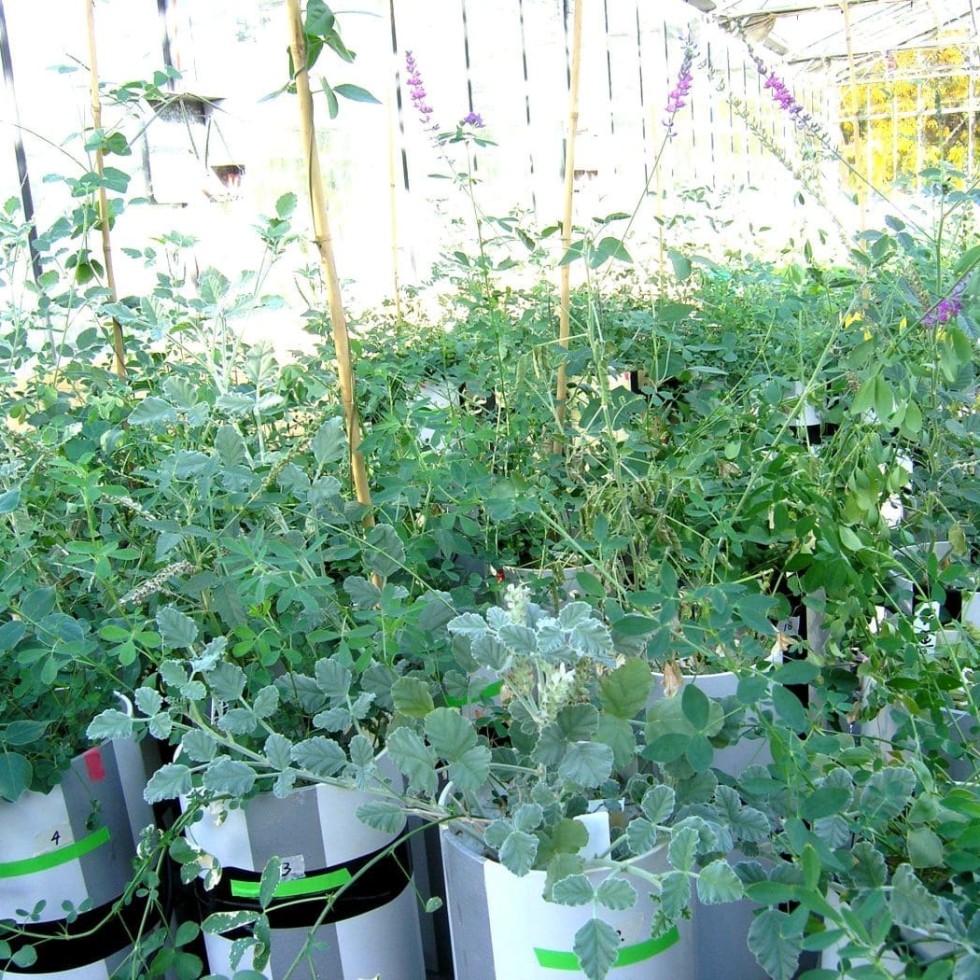 A research study has uncovered two perennial legumes that could act as a constant and reliable source of feed for livestock through extended periods of drought.
A research study has uncovered two perennial legumes that could act as a constant and reliable source of feed for livestock through extended periods of drought.
The Rural Industries R&D Corporation-funded study, conducted in the southern wheatbelt of Western Australia, found that the two legume species – tedera (Bituminaria bituminosa var. albomarginata) and Cullen australasicum – performed extremely well in low-rainfall environments.
Although the study was based in south-western WA it is expected the two legume species would perform well in many low rainfall areas across Australia.
Dr Megan Ryan of the University of WA and Dr Daniel Real of the Department of Agriculture and Food WA studied ten different species of perennial legumes but discovered that two of the species stood out from the rest.
“Tedera is a non-native legume which showed consistently high levels of establishment, survival and productivity in the study,” Dr Ryan said, in a release issued today.
The main strength of tedera is its ability to produce up to two tonnes per hectare dry of green leafy shoot material during the summer-autumn period when the growing region experiences a pause in production and leaves graziers with a feed gap that stretches from January to May.
“Like tedera, the native legume Cullen australasicum also produced green feed in the summer-autumn feed gap, though the varieties tested tended to exhibit slightly lower survival and productivity compared with tedera," Dr Ryan said.
“In addition to improving the productivity of marginal areas, these perennial legumes could provide livestock with an alternative which could also protect existing native vegetation from being heavily grazed during dry periods.”
The study involved both glasshouse and field trials and before undertaking research on all of the species the Future Farm Industries CRC undertook three separate biosecurity assessments to ensure the legumes would not pose a potential weed risk.
The study has identified that further breeding to select for drought tolerant traits could further improve Cullen australasicum’s potential in areas that are deteriorating or currently marginal for livestock.
The researchers suggest there is now a need to collect further germplasm of Cullen species to hopefully uncover more species/accessions of native Cullen that are well suited to the WA wheatbelt and even drier parts of Australia.
- The RIRDC report, ‘Drought tolerance of some new perennial legumes’ can be downloaded here.
